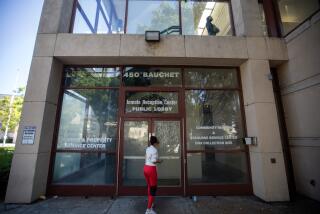Fumes Force Evacuation of 250 Workers From Lockheed
- Share via
Fumes from apparently overheated composites--plastic-like materials that help new military aircraft elude radar detection--caused one employee to become sick and forced the evacuation of 250 other workers Thursday at a Lockheed Corp. research facility in Burbank, authorities said.
The sick person complained of nausea and a headache and was treated at the facility’s first-aid station, said Battalion Chief Ken Whittekiend of the Burbank Fire Department. There were no other reports of illnesses, he said.
The workers were evacuated from the building at San Fernando Boulevard and Ontario Street about 10:15 a.m. and were allowed back about 1:30 p.m., he said.
Lockheed spokesman James W. Ragsdale said the facility, Building 369, is used for researching and testing composites for possible use in aircraft. The testing involves pressurized heating of composites in an industrial oven, he said.
The composites are used in jetliners to save weight and in radar-eluding Stealth military aircraft because they do not reflect radar waves as readily as metals. Lockheed in November acknowledged that its Burbank facilities have for some time been building the formerly top-secret Stealth fighter.
More than 200 Lockheed workers have alleged in lawsuits and worker’s compensation claims that they have become ill from composites and other materials used by the company. Lockheed agreed in June to pay $1.49 million in penalties imposed by the U. S. Department of Labor for 440 violations of workplace safety rules.
Fire Department hazardous materials specialists who took atmospheric readings after Thursday’s incident detected slightly higher than normal levels of carbon dioxide, Whittekiend said. They found no traces of formaldehyde, a potentially carcinogenic material that he said was listed among the components of the composite material being tested.
He said formaldehyde may have been present in the air before the Fire Department took chemical readings at 11 a.m.
Fumes from the material were present about 6 a.m., two hours before most workers arrived, he said.
The cause was unknown, he added.
More to Read
Sign up for Essential California
The most important California stories and recommendations in your inbox every morning.
You may occasionally receive promotional content from the Los Angeles Times.













